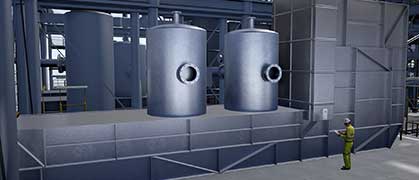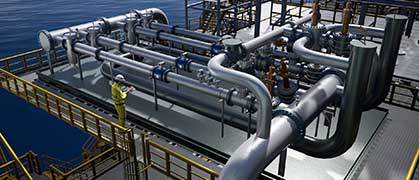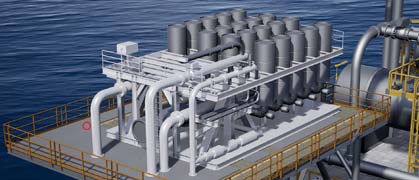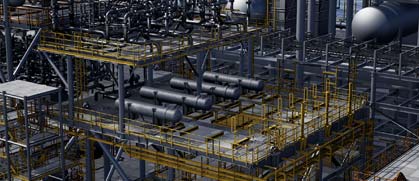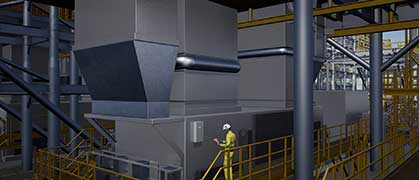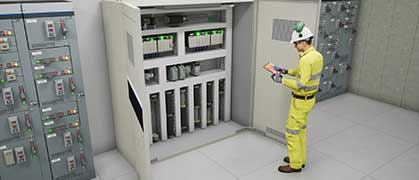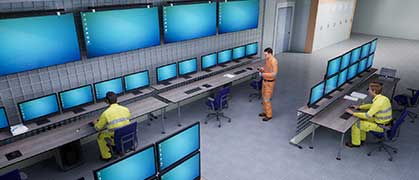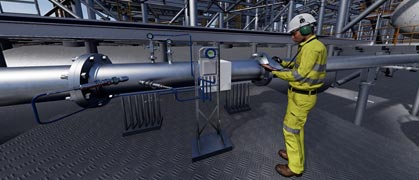Welcome to the connected vessel
This model is interactive. Why don’t you click on the (+) signs and see where they take you? Perhaps you’ll learn about new ways of helping you reduce risk and improve your overall operational efficiency. Then there’s the connected vessel. What’s that? That’s the future!


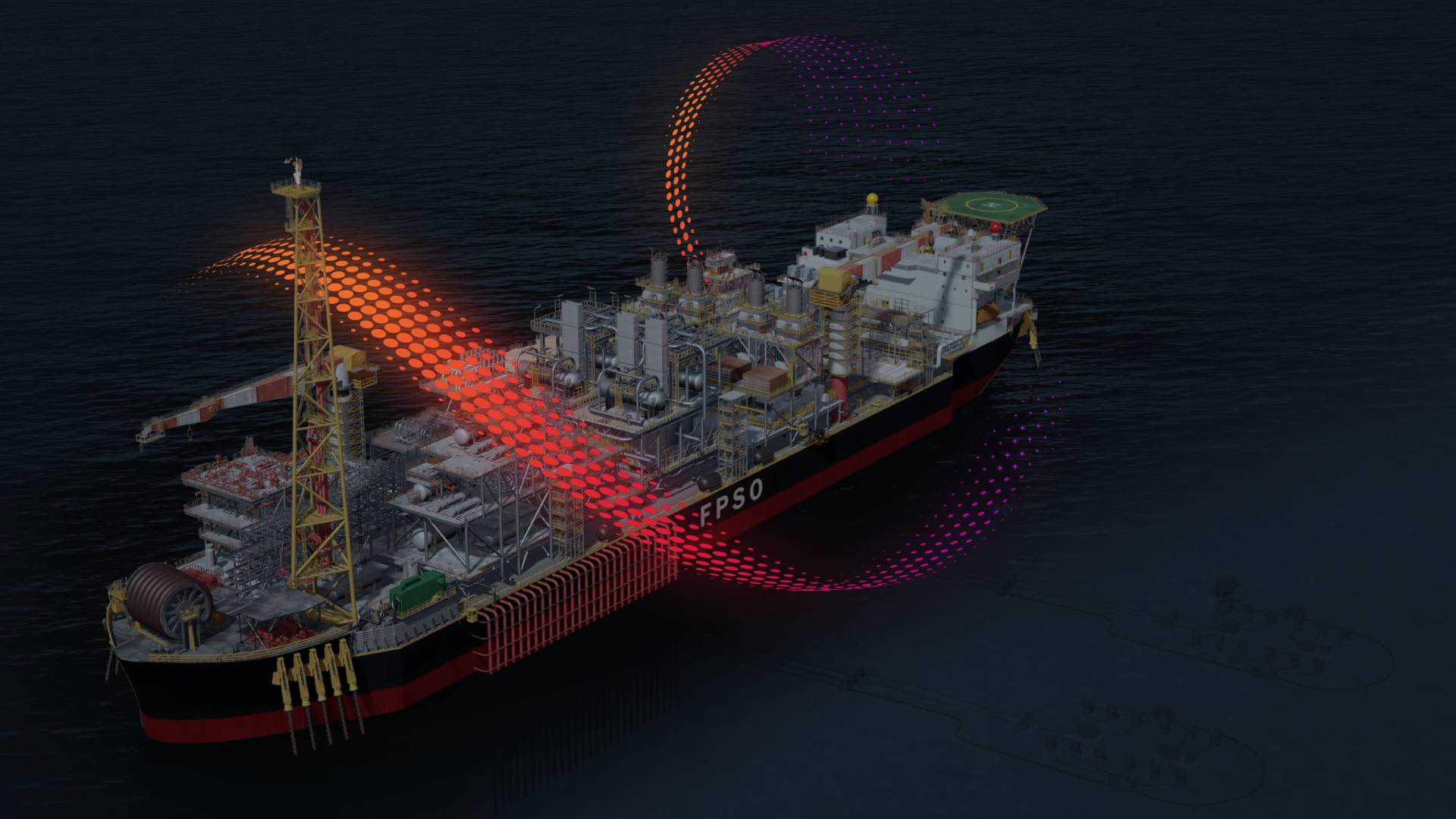
Connected Vessel Overview
A vision for the future, attainable today. A strategy that uses the latest digital technologies in combination with proven project execution and work processes that drive improved operational efficiency. How? Let’s break it down:
- Connected modules – the specification and application of standard systems across all provided modules and with proven connectivity to the main vessel systems
- Connected production – allows visibility and solutions for flow assurance through the system, from the reservoir through the production modules, but more on that later
- Connecting people – the use of the latest technologies and workflows to connect your operations staff to information and expertise as they need it
- Connected onshore operations center – provides one onshore location for coordinated operations for the life of the vessel, allowing both internal and external subject matter experts to collaborate in a fully digital environment

What is the FPSO Coalition?
Rockwell Automation and Sensia joined SLB and Cognite to become an open coalition of companies aimed at evolving FPSO performance in the oil and gas industry. It was born on May 1, 2023 in Houston, TX.

What can you expect from the FPSO Coalition? We can help you:
- Accelerate time to first oil
- Help assure efficient equipment performance
- Optimize production throughput
- Reduce your carbon footprint at scale
Learn more about our coalition.
#Evolve2Perform

Introduction to Package & Module Integration (OEM MAC)1
We are excited to tell you about a new concept to help facilitate the coordination of all the modules that support your vessel. We're calling it OEM MAC. Here are a few highlights:
- One main automation contractor responsible for the coordination and integration of each module and package into the main vessel systems.
- The FPSO automation systems - both main systems and the individual module systems - must fit together in a collective ecosystem
- Requires a global effort of collaboration and interface management to be most efficient with CAPEX/OPEX spend and to minimize the risk of interface issues
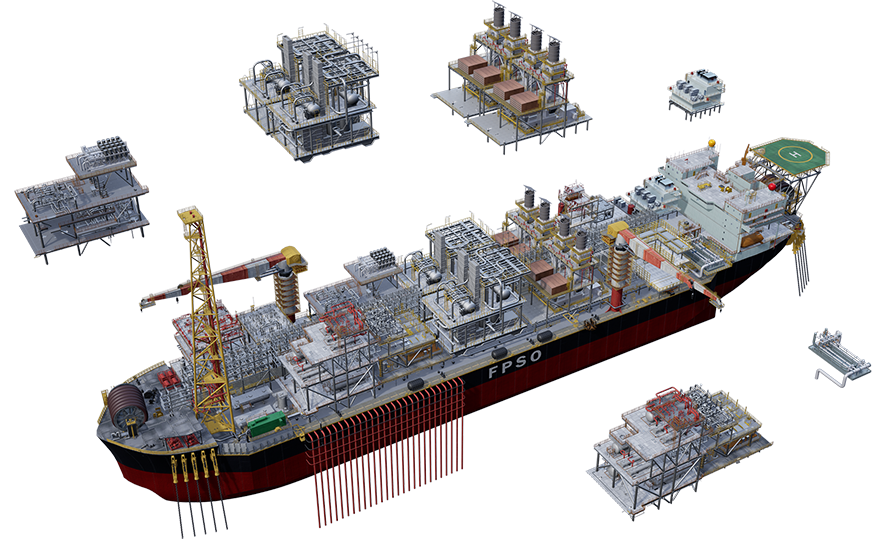
Benefits & value of using an OEM MAC2
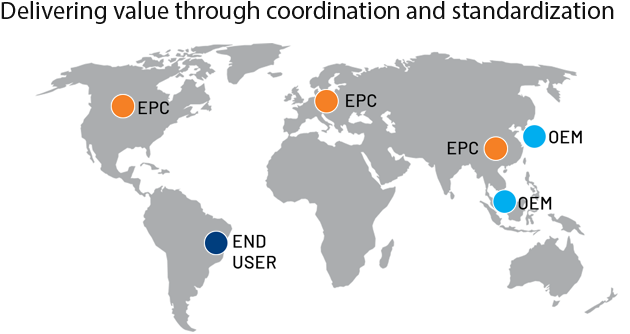
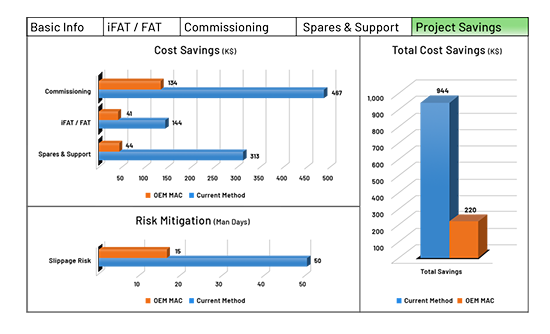
OEM MAC delivers value in the following areas:
- Overall responsibility for the automation network and all connectivity; reduces risk in interface management and schedule slippage
- Standardization on hardware, software, and interfaces
- Set the testing strategy, simulating and risk assessing all packages for a truly integrated test philosophy
- Delivery, integration and site acceptance testing management and coordination
- Common network infrastructure with secure remote access
Proven project & schedule savings:
- FAT testing - virtual versus traditional
- Commissioning - centralized Rockwell Automation remote commission leader with a local on-site Rockwell Automation engineer versus the traditional method
- Spares and Support - current method (supplied by each OEM) versus inventory reductions as a result of automation consistency across all packages
- Total cost savings estimated at $724,00 in this 15-module example
- Schedule reduction of up to 35 man-days = everything fits in the shipyard
OEM MAC project execution & additional services3
OEM MAC deliverables on a project:
- Concept phase – agree to OEM MAC execution
- FEED – build OEM MAC specifications
- Detailed engineering – execute with each OEM
- Testing
- Installation, commissioning and startup
- Spares and obsolescence management programs
- Technical support contracts
Development assistance may include:
- Best practice architecture and control
- Process package hardware design optimization
- Co-development on control conversions
- Software development toolkits
- Competency development
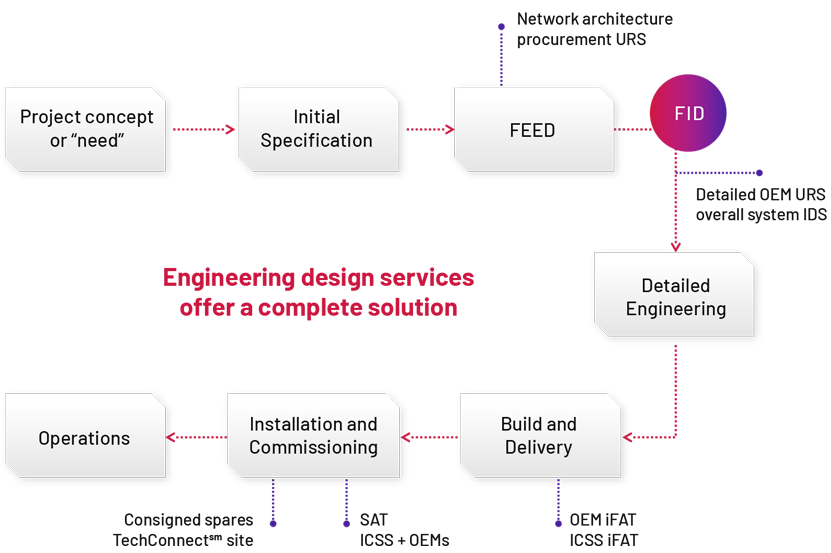
OEM MAC - Global support & conclusion4

Global network of resources:
- Technical consultants / project managers
- Staff of over 150 engineers worldwide
Proposal development & collaboration:
- Streamline the tendering process, provide
technical consulting automation and
electrical, global consistency in pricing and delivery
Outsourced engineering
+ panel-building services
The connected vessel onshore operation5
Full remote onshore operation that will allow OEMs to connect to a skilled worker on the vessel to reduce cost and dowtime
Proven success:6

P74 FPSO Automation System (Topside and Hull)
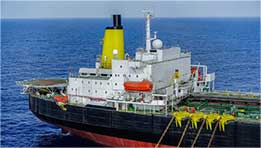
- Full process control, emergency shutdown system and fire & gas for FSPO (ICSS)
- Over 10,000 hardwired I/O + 30,000 network I/O
- Hazardous location/Aggressive environment
- System Design, FDS design
- Project management and engineering
- FAT, SAT, Commissioning, startup and assistance

BP Tortue - Mauritania & Senegal
John Capstack, C&I Project Lead
- “BP Tortue FPSO has standardized on Allen-Bradley / Rockwell PLCs across all Topside and Hull packages. By following their User Requirement Specification developed in FEED and having a central support contact with Rockwell, the project has managed to standardize hardware and software delivery.”
- “Standardisation advantages include single PLC type to maintain, so reduced operations training, standard software configuration, standard IT / digital security approach and standard hardware so common obsolescence approach and reduced spare parts.”
- “BP operations are also able to remotely monitor all Allen-Bradley PLCs from onshore which help reduce OPEX costs both from a travel and support/service perspective.”
- “OEM MAC is also considered as COVID and carbon footprint friendly!”
Let’s take a look at an OEM MAC in action:7
Results of an OEM MAC8
- Modules are delivered with standard network architecture and standard hardware/software
- Modules connect and communicate with no issues at the shipyard
- Commissioning is easy and mistake free – no risk to the budget, no risk to the schedule
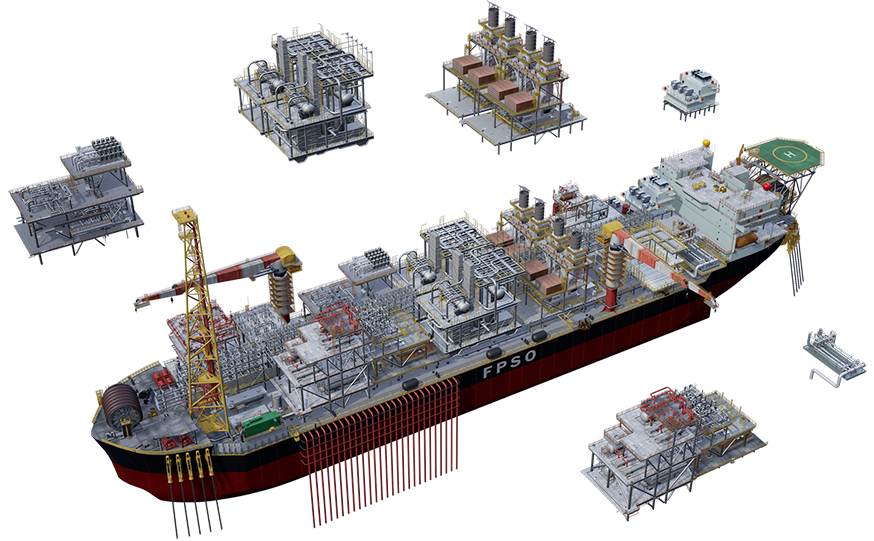



Vessel Automation and Digitalization Partner (VADP)1
What does VADP mean? Why is it different from a MAC (main automation contractor) ?
The typical MAC scope is the project component of the VADP lifespan

VADP covers the entire lifecycle of a project/vessel – from conception through retirement
Stages of VADP Implementation2
Rockwell Automation and Sensia come together to be your VADP resource through every stage – reducing project risk from concept through extended operation.

Objectives of VADP3
Rockwell Automation and Sensia come together to be your VADP resource through every stage – reducing project risk from concept through extended operation.
- View the project as a whole and not individual initiatives
- Reduce costs by standardizing IT/OT hardware and software for initial launch and continued maintenance and support
- Monitor equipment performance, inspections and upgrades
- Incorporate semi-autonomous (near autonomous) design for seamless operation
- Lower the total cost of ownership (TCO) and improve lifecycle performance
- Use digital solutions to maximize monitoring and operational capabilities of the Onshore Operations Center

Let’s take a look at VADP in action4
Rockwell Automation and Sensia come together to be your VADP resource through every stage – reducing project risk from concept through extended operation.
Predictive Maintenance
Scenario: Predictive maintenance best practice using VADP infrastructure
Operations
Scenario: Operations without the Digital Infrastructure offered by VADP
- Topside module supplied without standardization to the main automation system
- Maintenance documents provided at the end of the project (files kept in a drawer)
- No single comprehensive maintenance program was implemented during the project
- Vessel operating for 3.5 years
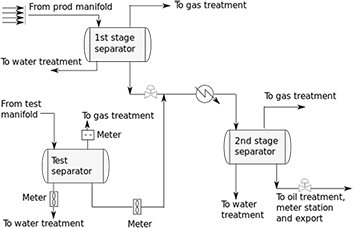
VADP Benefits5

Cost Savings
- Reduce CAPEX, maintenance costs and spare parts management when you standardize the IT/OT infrastructure
- Save millions of dollars by using an OEM MAC partner

Time Savings
- Quicker, more accurate quotations and more efficient FAT process from module and package coordination
- Achieve faster time to first oil and easier connectivity in the shipyard through minimizing startup and commissioning surprises

Risk Reduction
- Reduce personnel safety risks by moving towards the target of NNM (not normally manned) assets
- Reduce risk of environmental incidents by using predictive maintenance and asset performance management



